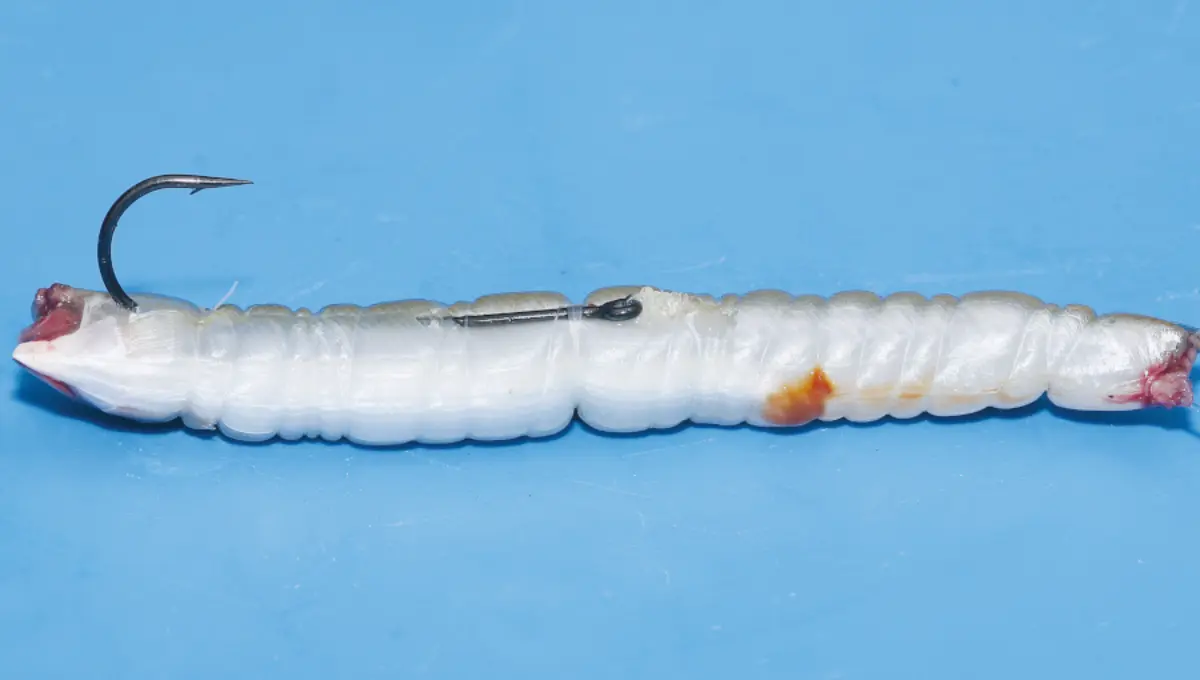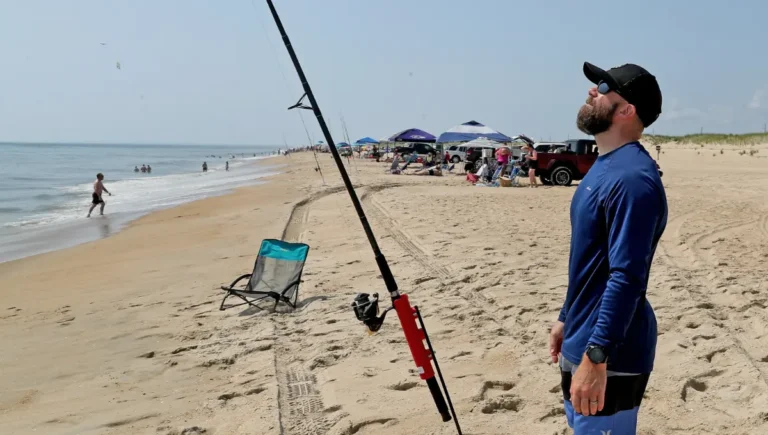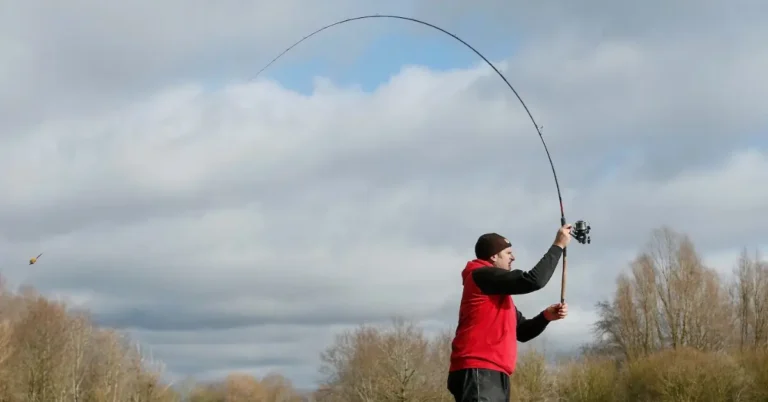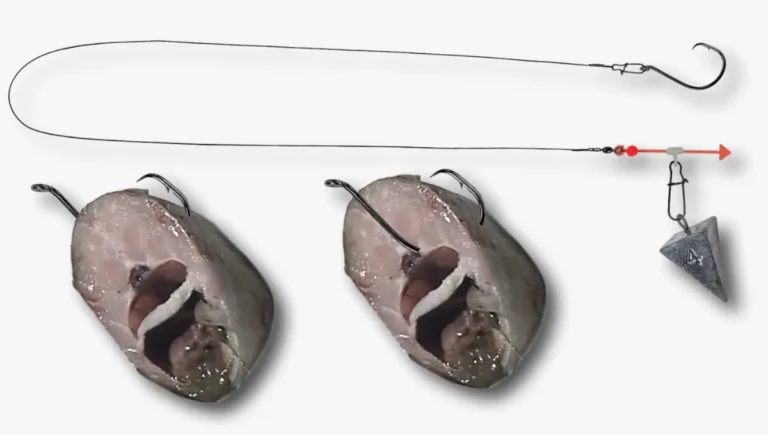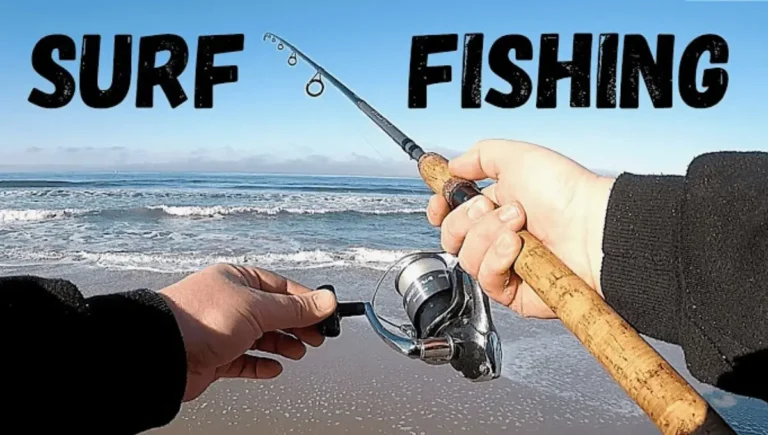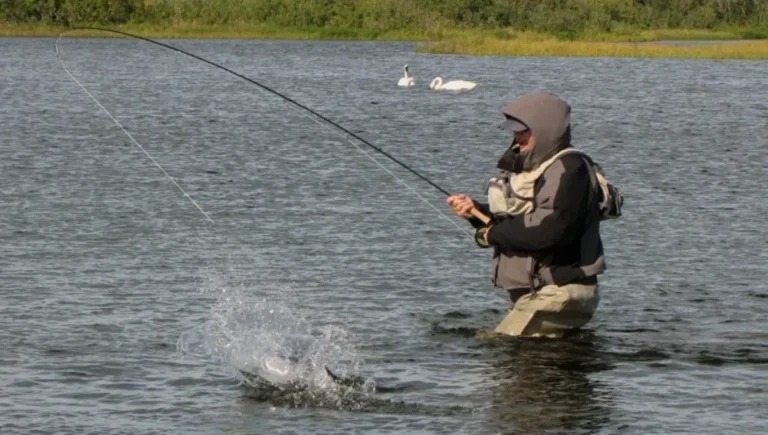How to Rig Frozen Shrimp for Surf Fishing in 2024
Frozen shrimp is a very effective and inexpensive bait that many surf anglers use to catch a variety of fish close to shore. Properly rigging frozen shrimp on your fishing line is crucial to attract fish and set the hook for a solid catch. This tutorial will explain the basic rigging methods surf fishermen can use with frozen shrimp in 2024.
Using either a simple shrimp rig or fish-finder rig, anglers can quickly and easily prepare their lines with bait before a day of surfside fishing. The rigs are simple to tie and allow shrimp to drift naturally in the surf zone currents enticing fish to bite. With some basic knots and rig setups, any surf fisherman can start catching more fish by rigging frozen shrimp the right way.
Also Read: Best Size Braided Surf Fishing Line For 2024
Section 1: Choosing the Right Frozen Shrimp
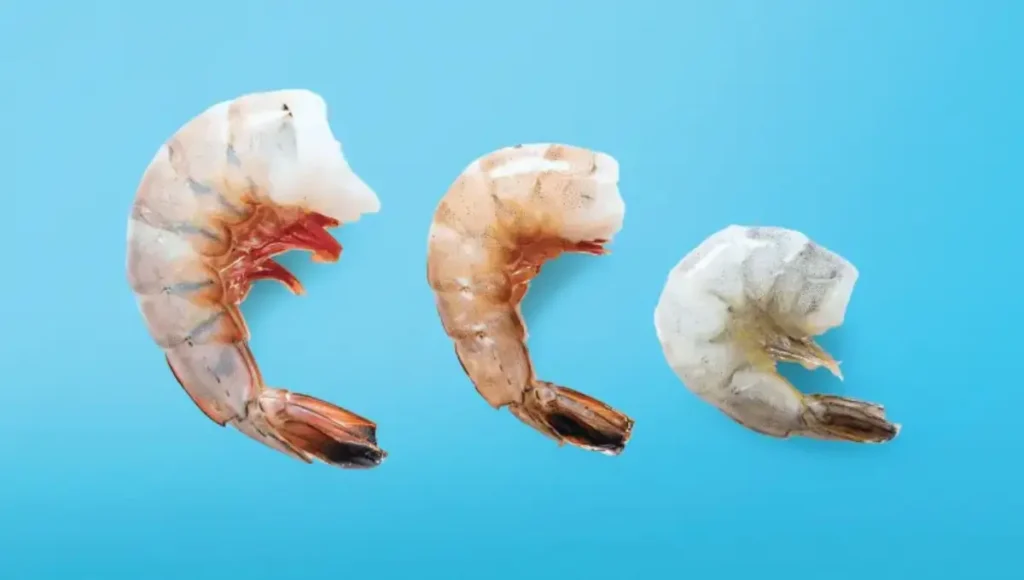
Selecting Quality Shrimp
When rigging frozen shrimp, it’s crucial to start with high-quality bait. Opt for frozen shrimp that are properly preserved, with intact shells and a firm texture. Check for any signs of freezer burn or discoloration, as these can affect the bait’s attractiveness to fish.
Size Matters
Consider the size of the shrimp based on the target species. Larger shrimp are ideal for bigger predators like redfish, while smaller shrimp may entice speckled trout. Experiment with different sizes to see what works best in your local surf conditions.
Section 2: Essential Rigging Equipment
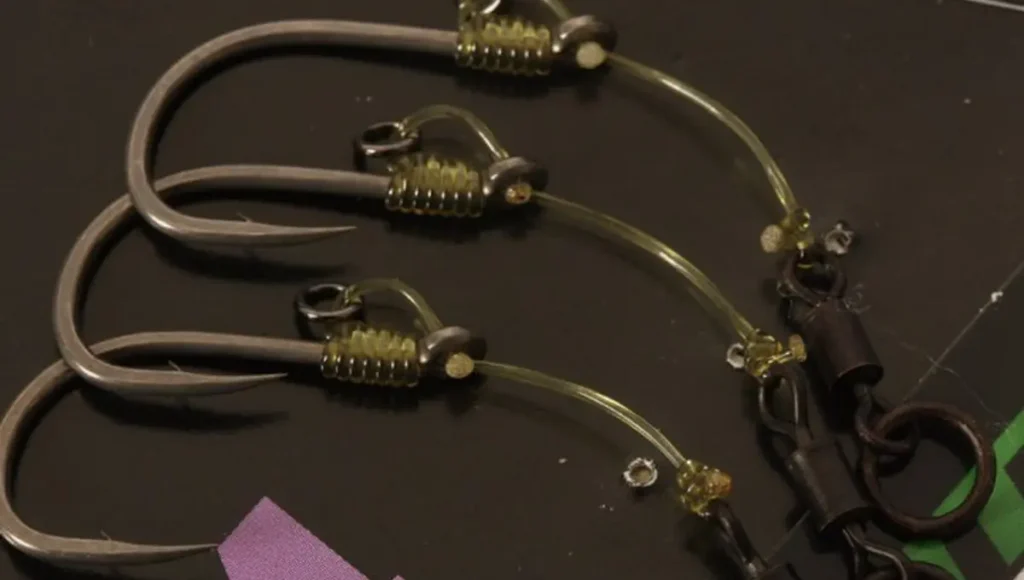
Rigging Rod and Reel
Choose a surfcasting rod and reel combo that matches the size of the shrimp you’re using. A medium to medium-heavy rod with a durable spinning reel is generally a good choice for surf fishing.
Hooks and Leader Material
Select the appropriate hook size for the shrimp you’re using, usually ranging from 1/0 to 4/0 for medium-sized shrimp. Use fluorocarbon leader material to increase invisibility in the water and reduce the risk of fish detecting the line.
Weights and Bobbers
Depending on the surf conditions, use a pyramid or bank sinkers to anchor your bait in the water. Adjust the weight based on the current and waves. Adding a bobber can help keep your bait just above the sandy bottom, making it more visible to passing fish.
Section 3: Rigging Technique
Basic Carolina Rig
The Carolina rig is a versatile setup for surf fishing. Thread a bullet weight onto your mainline, ensuring it sits securely. Follow this with a bead and a swivel, creating a simple yet effective setup for your fishing rig.
Attach a fluorocarbon leader to the swivel, and tie your chosen hook at the end. Thread the frozen shrimp onto the hook through the tail, ensuring a secure attachment.
Popping Cork Rig
For a more dynamic presentation, consider using a popping cork. Thread the mainline through the cork, followed by a bead and a swivel. Attach a fluorocarbon leader and hook, then add the frozen shrimp. The popping cork creates noise and surface disturbance, attracting fish to your bait.
Double-Drop Bottom Rig
Another effective rigging option is the double-drop bottom rig. Attach two dropper loops to your mainline, spaced about a foot apart. Tie a pyramid sinker to the bottom loop and your hook to the top loop. Thread the frozen shrimp onto the hook through the tail, allowing it to dangle just above the sandy bottom.
Section 4: Presentation Techniques
Casting Techniques
Mastering your casting technique is crucial for surf fishing success. Practice casting into the surf zone, aiming for areas with troughs, sandbars, and structures where fish are likely to congregate.
Patience is Key
Once your rig is in the water, exercise patience. Allow the shrimp to work its magic and attract nearby fish. It may take some time for predators to locate your bait, especially in changing tides and weather conditions.
Section 5: Tips for Success
Weather and Tide Considerations
Pay attention to the weather and tide conditions, as they greatly influence fish behavior. Fish are often more active during the incoming and outgoing tides, so plan your fishing trips accordingly.
Experiment with Different Shrimp Presentations
Try various presentation styles to determine what works best on a given day. This might include adjusting the depth of your bait, the speed of retrieval, or using different rig setups.
Be Mindful of Regulations
Keep yourself updated on local fishing regulations and size limits to ensure responsible and lawful angling practices. Respect catch-and-release practices and ensure you comply with all applicable laws.
How to Hook a Dead Shrimp for Bait
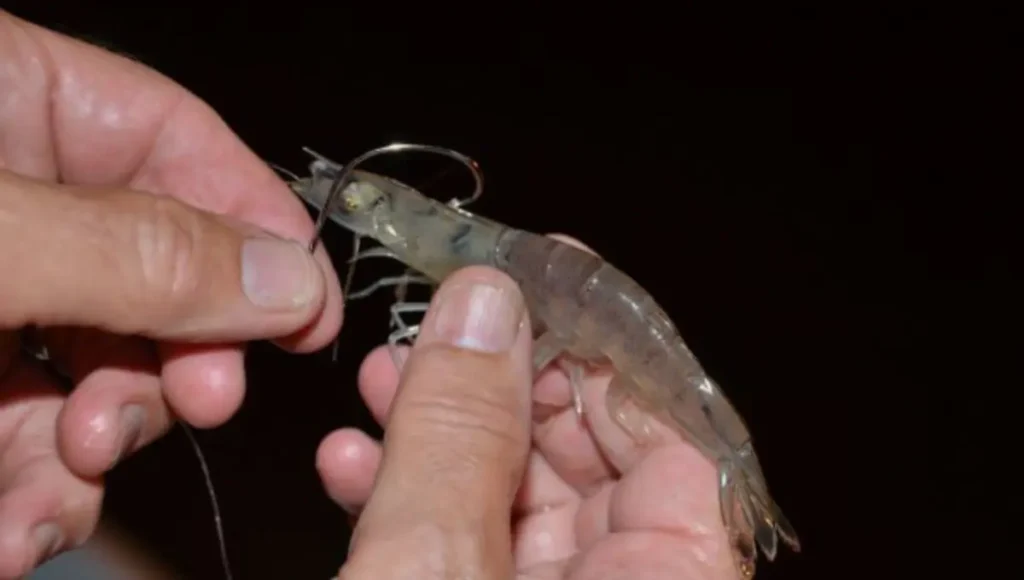
Hooking a dead shrimp for bait requires a delicate balance of precision and strategy to entice even the most elusive fish. The first crucial step is ensuring the freshness of the shrimp, opting for recently thawed or well-preserved specimens to maintain their enticing scent and appearance.
When it comes to selecting the right hook, choosing a size that complements the shrimp’s dimensions is pivotal, with hook sizes ranging from 1/0 to 4/0 for average-sized specimens. Embracing circle hooks adds an extra layer of effectiveness, promoting a secure hookset and ethical fishing practices.
When it comes to hooking techniques, tail hooking stands out as a widely embraced method. By skillfully inserting the hook just beneath the tail and allowing it to emerge through the top, a natural and lifelike presentation is achieved, appealing to the discerning nature of fish.
For a different approach, head hooking strategically through the shrimp’s head alters its swimming pattern, making it an enticing target for predatory fish. Balancing the weight of the shrimp with the size of the hook ensures a natural sink rate, mimicking the authentic movement of live shrimp.
Concealing the hook within the shrimp adds a final touch, increasing the chances of a successful hookset and preventing fish from detecting the foreign element. Mastering these techniques transforms the seemingly simple act of hooking a dead shrimp into a refined art, enhancing the overall success of your angling endeavors.
How to Hook Frozen Shrimp Bait
Hooking frozen shrimp for bait is a skillful process that involves ensuring the proper presentation of the bait to attract fish effectively. When working with frozen shrimp, follow these steps for a successful hooking technique.
How do I cook frozen shrimp?
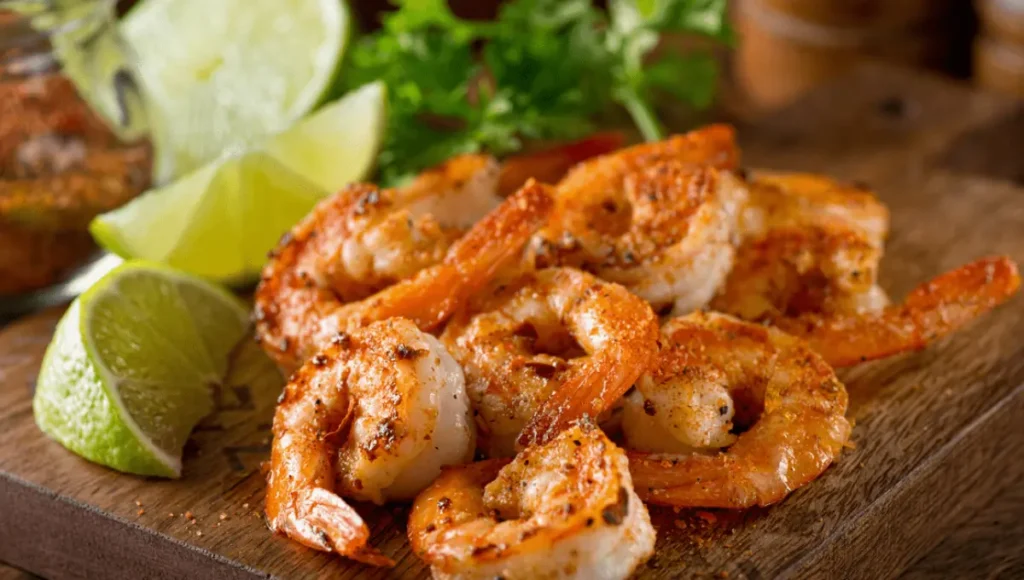
Cooking frozen shrimp is a straightforward process that can be done quickly and efficiently. Here’s a simple guide to help you prepare delicious frozen shrimp:
Thawing
Preparation
Cooking Options
Seasoning and Serving
Remember to adjust cooking times based on the size of the shrimp and the cooking method you choose. With these simple steps, you can enjoy perfectly cooked frozen shrimp in a variety of delicious dishes.
Frequently Asked Questions
Conclusion
Rigging frozen shrimp for surf fishing in 2024 requires a combination of thoughtful bait selection, proper rigging techniques, and strategic presentation. By following the tips outlined in this guide, you’ll increase your chances of a successful surf fishing experience.
Remember, patience and adaptability are key elements of a skilled angler, so get out there, enjoy the process, and reel in those impressive catches. Happy fishing!
